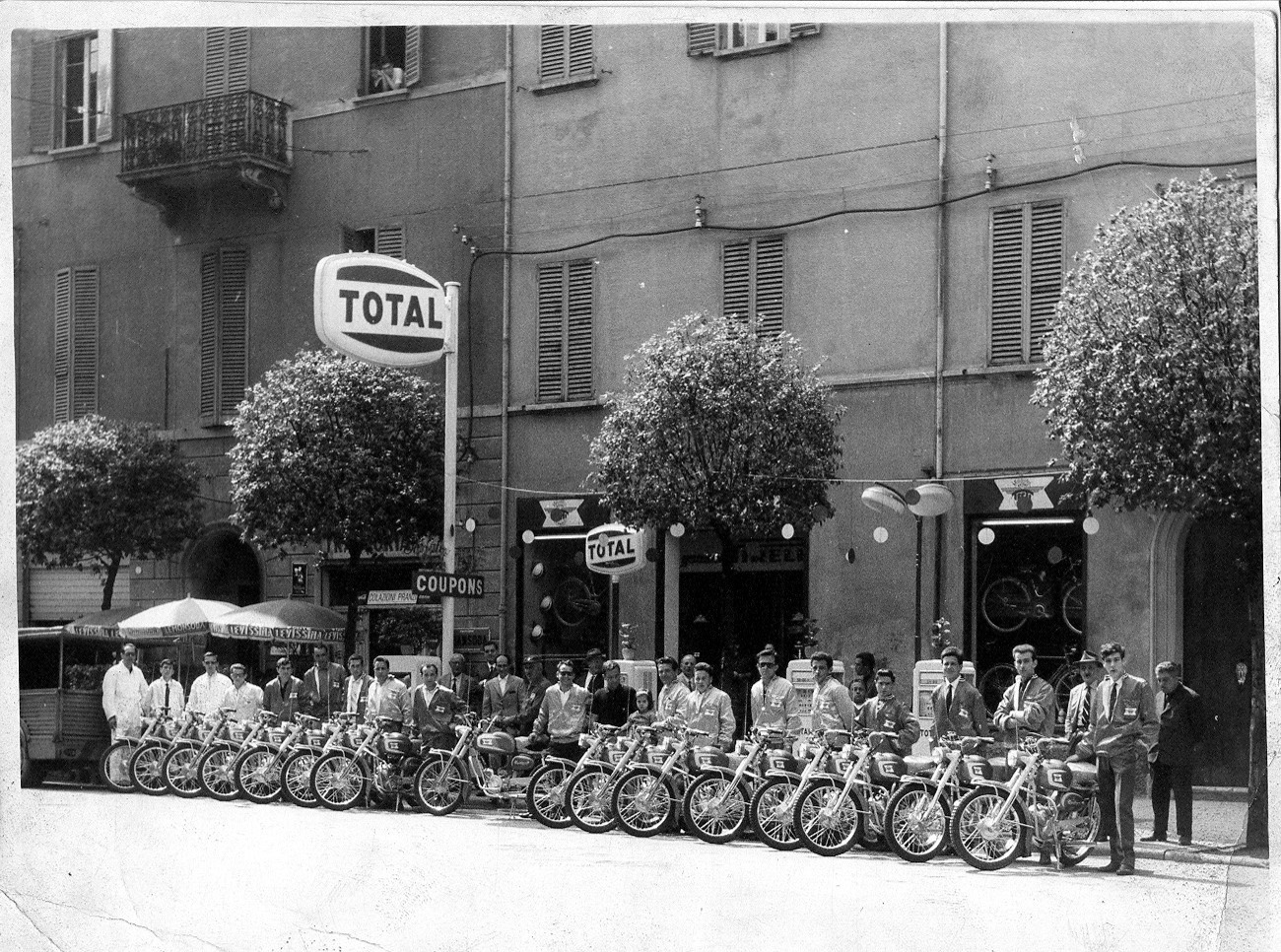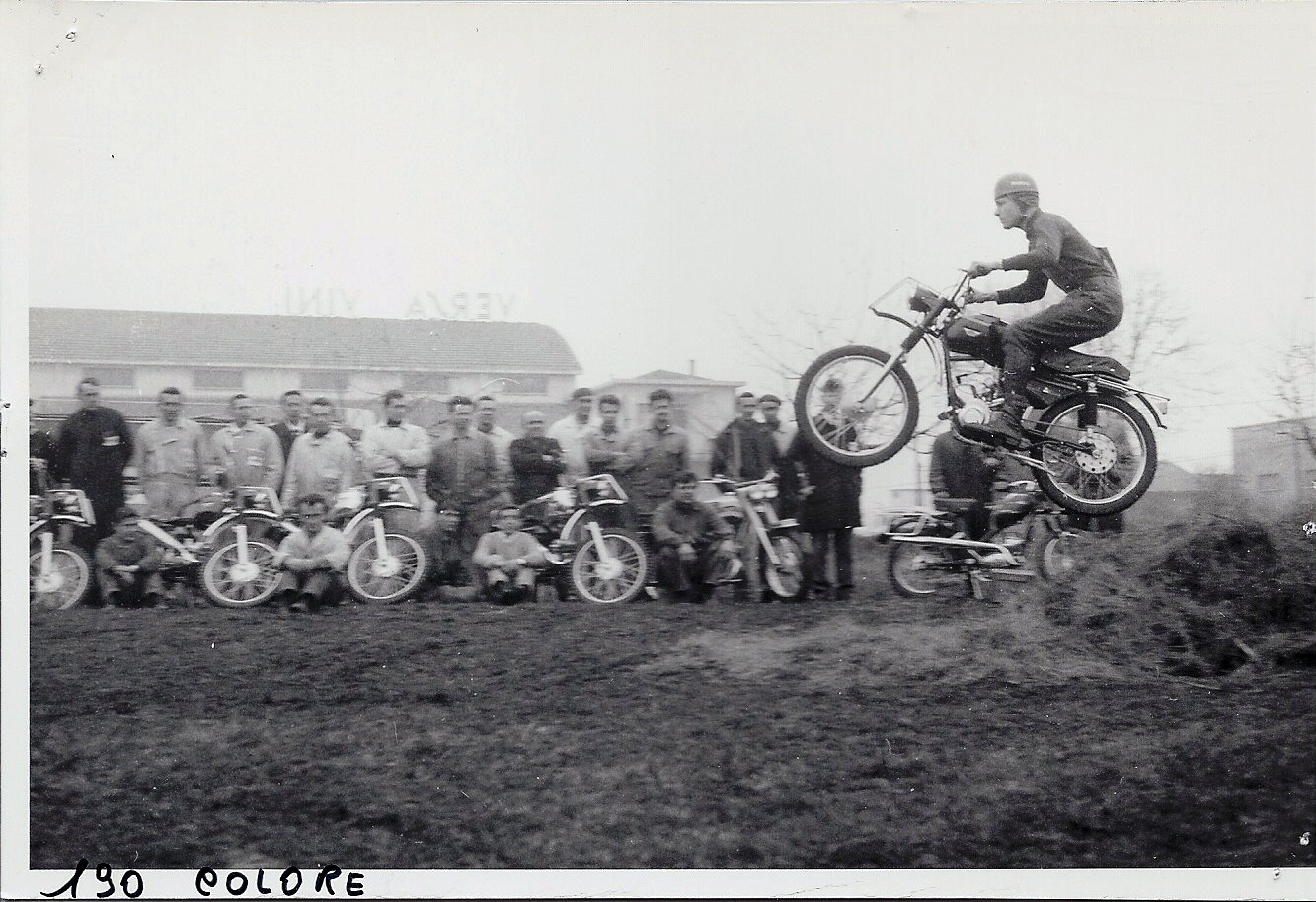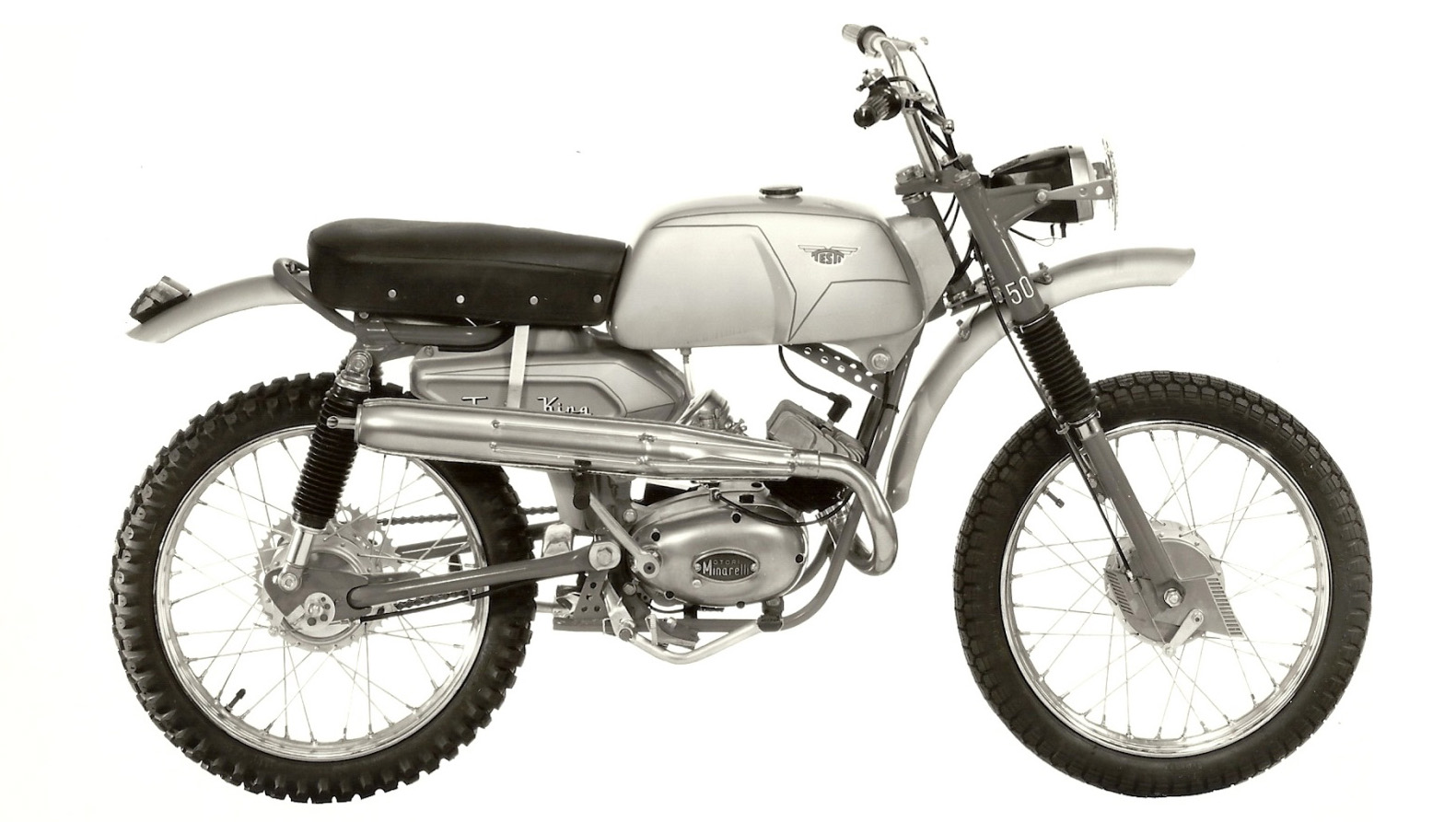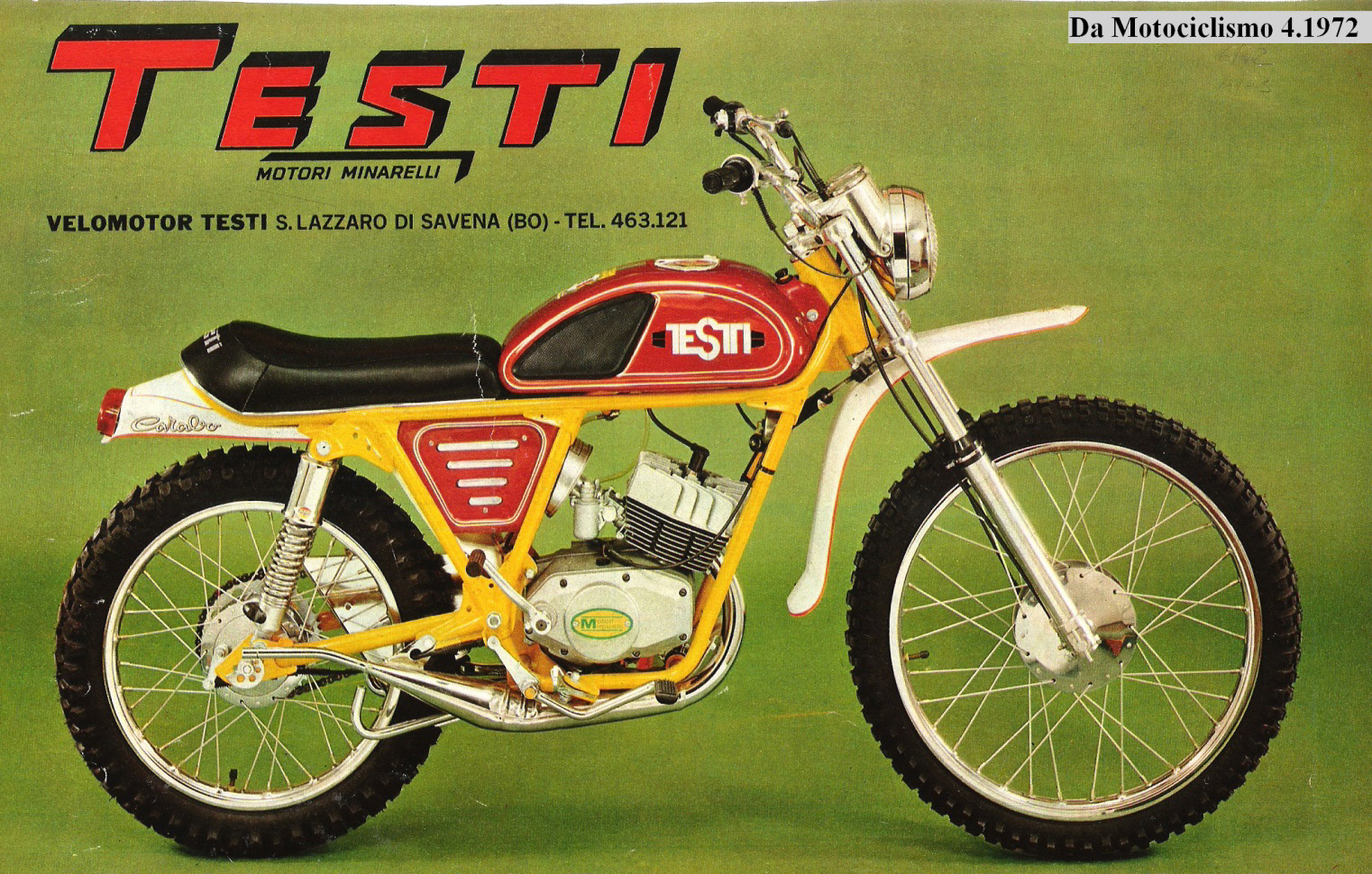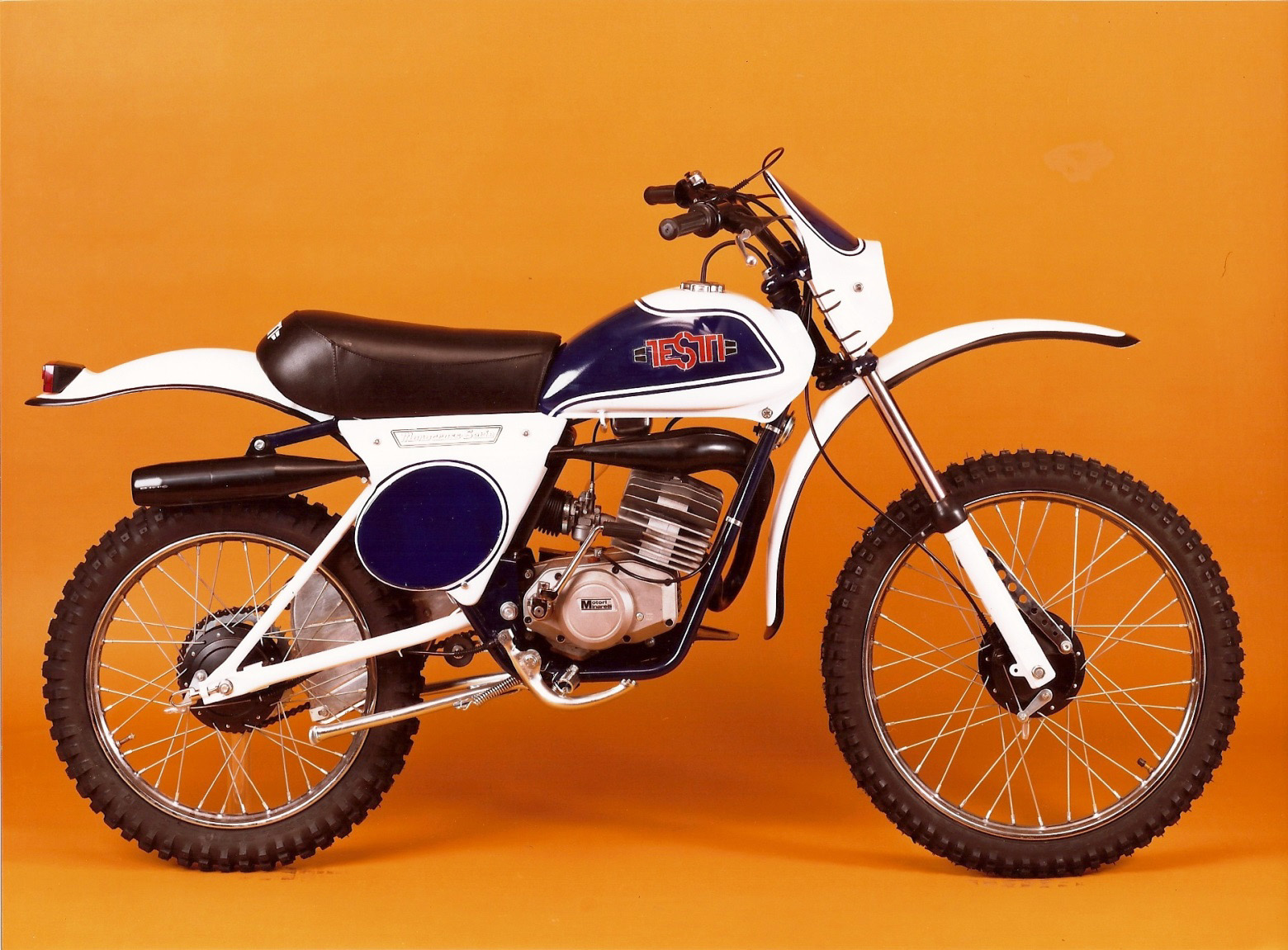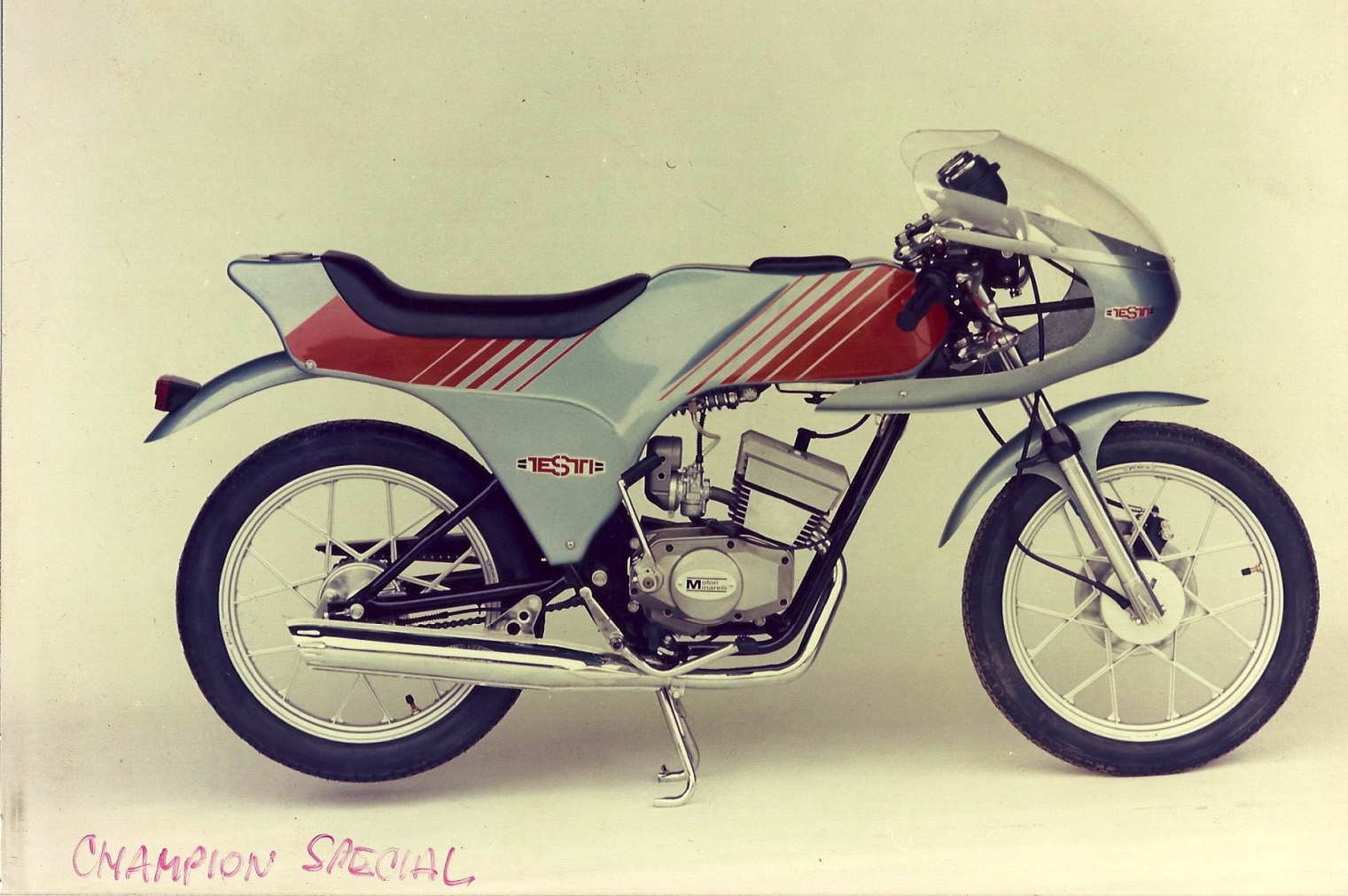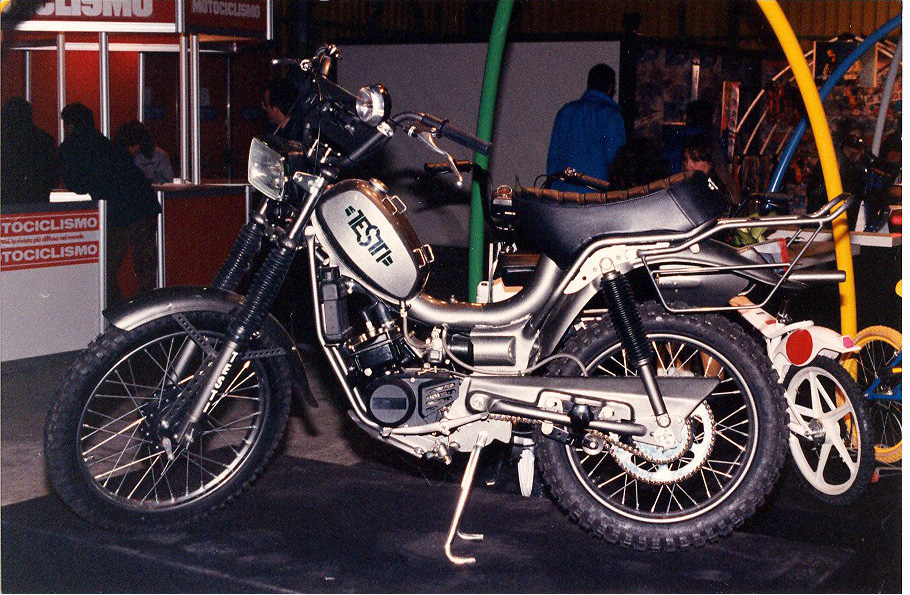Velomotor Testi, the Italian motorcycles that the world has lost
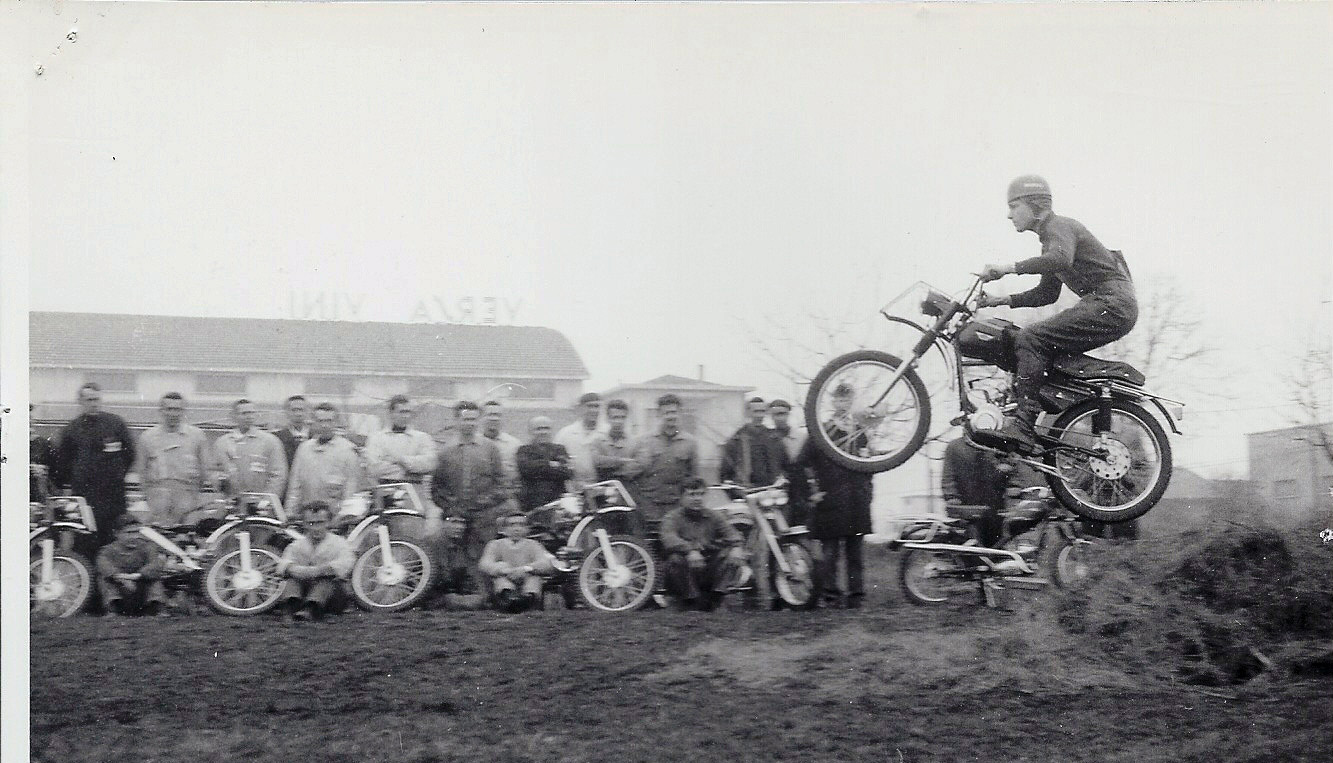
With a production of 20,000 motorcycles per year, the Velomotor Testi of Bologna was a real industry. It exported to 36 countries, including the United States, until it was financially overwhelmed by an initiative in China with foreign partners. Among its flagship models there were the Trail King of the sixties and the Champion of the 70s. All rarities that today are in the hands of collectors and which are very difficult to find on the market
“Testi… technique with imagination”: with this slogan, Erio Testi led the company founded by his father Umberto in 1934 until the end of the Eighties. A motto that could not have been more appropriate to reflect the essence of the entrepreneurial spirit of the character. A gentleman who made avant-garde mopeds both for the decidedly particular style and for the technical choices applied in mass production. The Testi motorcycles distinguished themselves from the Italian competition and also abroad.
Rising star. In 1934, Officine Meccaniche Umberto Testi built bicycles appreciated by Bologna’s upper domains and by amateur and professional riders. They were so much loved that in 1946, in honor of Umberto Testi, the organizers of the Giro d’Italia arranged the stamping of the participating bikes right in front of the Testi workshop in via Augusto Righi n. 13. Then, in the year in which Umberto Benfenati won the World Championship of cycling for amateurs in Paris, 1947, Umberto Testi decided to power his frames first with roller motors and then with the famous Mosquito produced by Garelli.
Licensed productions. The first real Testi frame for mopeds sees the light in 1950, also powered by Mosquito. More or less in the same period Umberto Testi signed a commercial agreement with the Austrian Sachs and shortly afterwards the production of motorcycles with 98cc Sachs engine and mopeds equipped with the famous 50cc “Baby Sachs” began. The vehicles are marketed under the Moto Sachs brand, although the references for homologation are all in the name of “Officine Meccaniche Umberto Testi”. Later the motorcycles adopt the Sachs of 125cc, 150cc and 175cc. Another agreement will then be with the Daldi brothers, producers of 49 cc engines under the Demm brand, for which Testi Motor was established in 1952, based in Milan, at number 24, viale Tunisia, which dealt with the distribution of the Dick-Dick series mopeds. The partnership provided for production until 1956, the year in which the bankruptcy of Officine Meccaniche Umberto Testi is declared, probably due to financial problems arising from commercial problems with Demm. However, perhaps thanks to a prudent bankruptcy trustee, the production of the frames continued with the construction of mopeds for other brands of the time (including Velo Mosquito and Baindex). The creation of the Dick-Dick Sport and the Demmino date back to this period (1957); the first will also be sold under the Ticino brand, again with a Demm engine.
Passing of the baton. In 1959, with the birth of Erio Testi’s Velomotor Testi in San Lazzaro di Savena, the old Umberto actually left the scene and his young son found himself an entrepreneur at the age of 26. The new activity still envisaged the production of frames for Demm but new brands required the tested frames produced by Velomotor Testi, later called only Testi, and immediately begins the collaboration with Minarelli, where Erio had worked in previous years. The first Grand Prix Testi was produced in 1959, initially produced under the name of “Unified” and most likely derived from studies for a Demm model. Three years later, the vehicle that will boost the company’s production is also presented, the Weekend Cross, again based on the Grand Prix chassis. It is equipped with various accessories, including the transistors radio, positioned on the handlebar and connectable to the antenna mounted as standard on the light. A “machine” that comes out of the box and that will be copied in style. With a new design on the tank, it will soon change its name to “Grand Prix”, which will accompany it until the early 1980s.
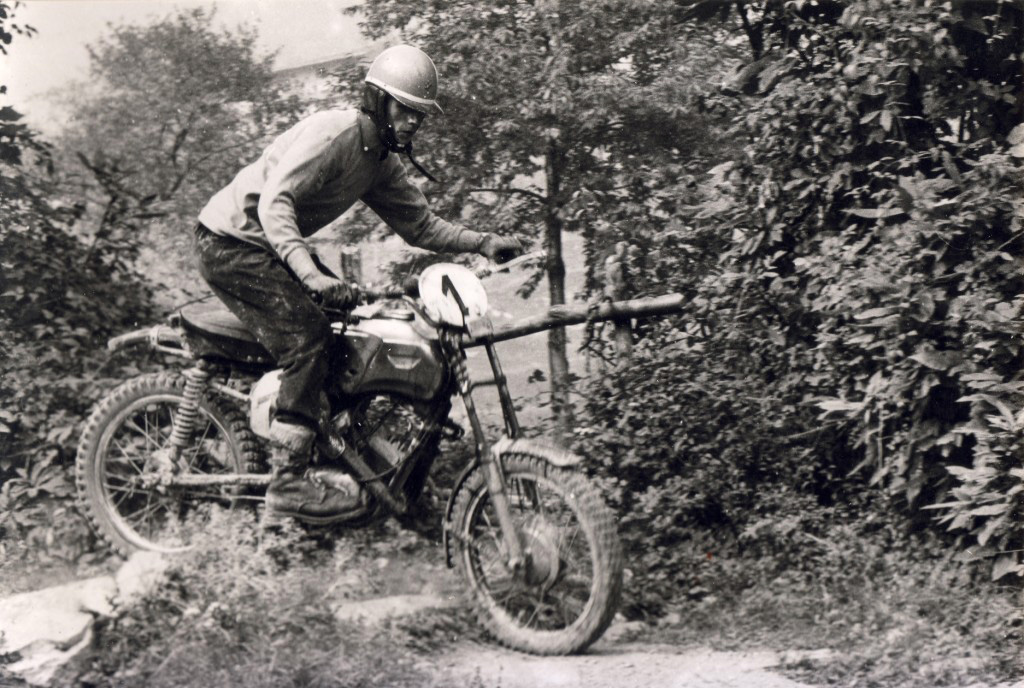
Motocross über alles. Testi also produced “women’s” two wheels vehicles with the progenitor being Testi Testina. A moped for daily use that formed the starting point for what has proved to be one of Testi’s longest-running achievements over time, namely the Testi Trail (not Trial). This creation was intended for a “sporting” use, that is for those who needed a means to move on land that was impracticable by normal mopeds and intended precisely for fishermen and hunters, as indicated in the advertisements of the time. Equipped with a double crown, it made it possible to adapt the final ratio of the engine to the needs of use. The novelty that made the success of this vehicle is the TDB (Testi or Trail Drive Box), a mechanical system that allowed you to insert the sprocket on the rear wheel, in the preferred size: small sprocket for road transfers, or large sprocket to overcome slopes up to to 45%. In practice, it consisted of a series of three pinions placed between the engine pinion and the two rear sprockets and allowed, through a pin, the choice of traction with one of the two sprockets mounted on the wheel. A mechanism that was obviously covered by a Testi patent. And it was not the only excellence of the model, since among the accessories there were also skis, which allowed it to move easily even on snow-covered surfaces.
Fabulous sixties. The Weekend Cross second series, a sporty model that perhaps wanted to mimic American custom bikes, with a couple of modifications transformed itself in the mid-sixties into a very sporty Telstar which, with a less sporty saddle, another headlight, different mudguards, a single muffler instead of the double one and different chromatic effects, others become nothing more than the new Grand Prix series. Equipped with a 4-speed Minarelli engine – P4SS model – prepared for the specialty, it mounts front and rear 19 “rims of the same size, and 2.50 tires on the front and 3.00 on the rear wheel. Unfortunately there is no news about the results obtained on the competition fields, but without any doubt the price of this vehicle, equal to about 200,000 Italian lire, represented a considerable commitment, if we think that the subsequent road version was sold from July 1965 to 130,000 lire. Another important novelty of 1965 is the presentation on the market of the Testi Trail King, a fifty designed specifically for off-road vehicles, the right evolution of the cross model. It was a real success and this model could also be equipped with the TDB system, as well as skis (larger) for use on the snow.
The Testi models of that period, however, were more: purely street and the right evolution of the previous ones, with new stylistic solutions and new colors that attracted customers. In the mid-1960s, Testi distributed its mopeds in various European countries and also in the USA, where demand absorbed 20 percent of production. In Northern Europe there was a collaboration between the company and various producers and the marketing of the Testi media took place under different brands; we remember Jupiter in Finland, Standard in Sweden, Superia in Belgium, VAP in France, Kerry Capitano in England and Steiger in Germany. Also in Italy some models were found under other names, first of all Demm, but also Legnano, Bianchi and MI-VAL. Already since 1965, Alberto Sangalli – later a standard bearer of the Norelli Scuderia – used a Testi Trail King, which he skilfully modified, to participate in various regional and provincial competitions (see photo above).
More and more technological. Between 1968 and 1969, new models were set up to renew production using the old looms. The Trail was offered with new colors, the road models were equipped with new tanks and the Trail King underwent different conformations, up to the presentation of the new range at the 1969 Motorcycle Show. Here the models presented had a new frame; for the road cars everything had been revolutionized, as well as for the off-road models; a considerable technical leap occoured as from the previous double cradle with central beam. For off-road vehicles there were ABS mudguards, Marzocchi front suspensions, as well as rear shock absorbers (adjustable to three positions); the roads instead had tanks and lines that would make many fourteen year olds devoted to speed dream. The other models in the catalog were the Royal Rally, the renewed Trail, Grand Prix, OK S, Testina P3; the price range ranged from 82.000 to 225.000 lire. In 1972, Testi also engaged in the production of 125 cc motorcycles and first presented a decidedly touristic model, the Easy Rider – later corrected in Raider -, equipped with the new 5-speed Minarelli 125, and then presented the Executive in 1973 at the Paris Motor Show. Again, in 1974, there was another road, the Corsa 2000 125/5.
Original and unconventional. The brand has officially participated in enduro and cross races with the riders Ennio Trenti (in the cross class 50 and then 125) and Roberto Gaiba (in the regularity). In the 50 class the model used was always the Carabo specially prepared for the two specialties, while in the 125 only a series of prototypes were made which had a good success. The presence of Testi was limited to provincial and interregional championship races, with sporadic appearances in the Italian championship as regards the cross 125 class. Returning to production, it was in 1975 that the big news arrived. Like the new version of the “legendary” Trail, which has been in production since 1965, followed by the new Champion Lusso and the new Carabo, which revolutionizes the world of off-road fifties as, first of all national production and probably not only, adopts a monochrome suspension, a simplified version of the system presented by Yamaha only two years earlier. The Cross Special went into production only three years later. In the meantime, a new road model joined the Champion Lusso, which will remain in production for a few more months: it is the Champion Veloce, which adopts the monochrome frame with a particular conformation in which the upper beam acts as a tank for the mixture. Another unconventional novelty developed by Testi is the Testi Amico (photo below), a scooter-like model built on a traditional frame and equipped with the Minarelli V1 K engine (kick starter) or V1 (equipped with pedals). Even Cricket took on a new guise and in the meantime Erio Testi, always in turmoil, was still able to design new vehicles.

Kaleidoscope of novelty. In 1977, thanks to the market demand for the so-called “tuboni”, Erio Testi presented the Testi Jeans (a model actually declined by Cricket), an avant-garde vehicle in terms of size and equipment, with a very conventional “visible” frame but of made of a resistance without equal in the whole panorama of the category. 1977 was a year of preparations for the Milan Motor Show in November, which was full of news for Testi. At its stand the new models were presented with the new monochrome frame for the off-road and the Militar, which replaced the Trail. As for the road, there was the new Grand Prix also equipped with a monochrome chassis, taken from the previous chassis presented in 1975 that equipped the Carabo and then no longer produced. At the end of the seventies also the Testi IO came out, which in fact shows a very remarkable resemblance to the Piaggio Ciao. The Minarelli engine, however, was more performing than the one produced by Piaggio and the rear suspensions coupled to the front fork give a whole other comfort while driving.

The beginning of the end. In 1984 an American finance company asked the engineer Minarelli who was able, in Italy, to build a factory for mopeds from scratch, being about to sign an agreement with China for this purpose. Minarelli saw Erio Testi and his Velomotor Testi as the ideal partner for the Americans and therefore proposed him to the financial group for the adventure in China. Thus, Fosti, acronym of Foshian – the Chinese region where the new factory is located – and Testi were established in China. In Italy, the newly formed Fosti Italiana Srl followed the various stages of the construction of the factory. This agreement with the Americans brought some oxygen to Testi, which thanks to a contract for the USA, produced 7,500 mopeds for the US market and at the same time consumed finances for the plants and the transfers of the workers involved in Chinese territory. During 1985, the new moped, based on the specifications of the Chinese, was built and submitted for their approval, but they did not decide to sign the agreement which also provided for the supply of over 3 thousand mopeds produced in Italy by Velomotor Testi and the Italian market was in continuous decline.
In 1986 there was a strong financial tension at Testi, sales had collapsed, investments made in China were at total risk, but Erio Testi, confident of the signing of the agreement with the Chinese, did not fire any of his 120 workers, always hoping in the recovery of sales and production for China. In the last months of the year he retired to his estate in Kenya, leaving everything in the hands of his son-in-law Guido Totta, who continued to hope for the Chinese agreement. A few months later, the cold shower: there was no longer any hope that the Chinese would have signed and actually appropriate the structures brought to China for the construction of the factory, the Americans started a lawsuit and everything seemed lost. Production was now non-existent, we are talking about 2 thousand pieces, but they needed to prepare the new models for the 50th Motorcycle Show to be held in Milan, as always in November. Therefore new versions of the “tuboni” were prepared, new colors were created for the Militar and a new version called Scout, equipped with the liquid-cooled Minarelli, saw the light. Meanwhile, Testi, which had never stopped producing bicycles, including the first MTB produced in Italy, was launching new models in this sector as well. None of this, however, seemed to prove useful in reviving the fortunes of the company: in April 1988, Velomotor Testi applied for admission to the arrangement with creditors procedure. The suppliers and the banks, who had always worked with the witness, vote against the procedure requested by decreeing the declaration of bankruptcy, filed on July 14, 1988.
The Testi motorbykes nowadays. In memory of this significant Italian reality and with the aim of safeguarding what remains of its production, there is the Registro Storico Testi (www.registrostoricotesti.it) in which over 200 members speak and discuss for the restoration of their vehicles and where everyone can find an answer for their own Testi. The Registry has as honorary president Cristina Testi, one of Erio’s daughters, who passed away in 2008. Even today, with the Testi Factory of Bologna, Cristina is dedicated to the construction of off-road mopeds for those under the age of 14. And for those wishing to learn more, a book has been written on the history of Testi with the entire production reported in detail. The volume, currently in its second edition, is available in bookstores in the sector or by writing to: registrostoricotesti@gmail.com
by Nicola Salina
Founder and executive chairman of the Registro Storico testi



